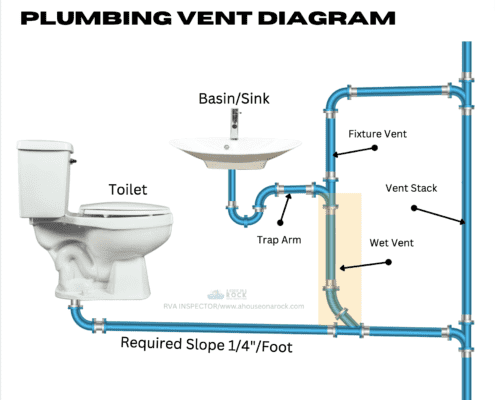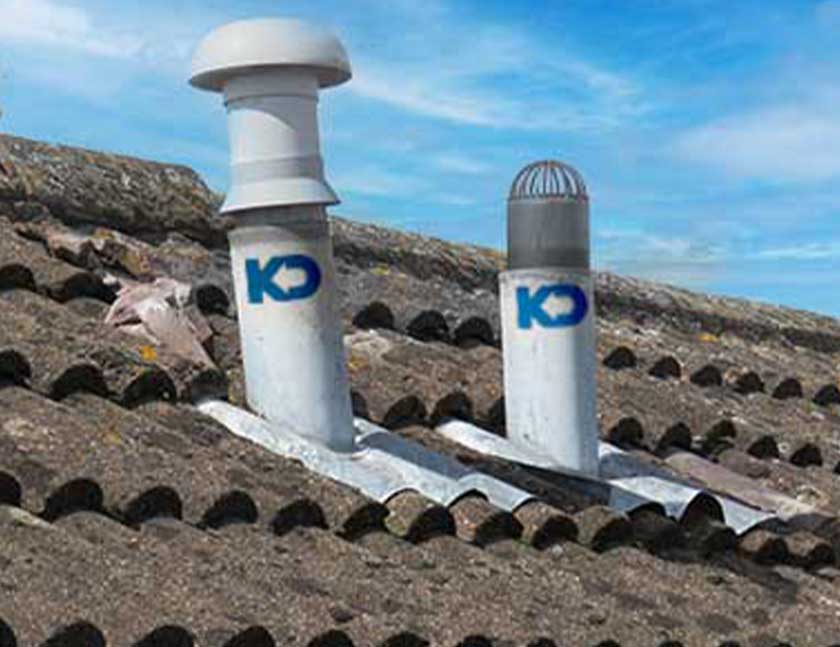Essential Reasons for Proper Ventilation in Plumbing Systems
Essential Reasons for Proper Ventilation in Plumbing Systems
Blog Article
The writer is making a number of good annotation on the subject of What Are Plumbing Vents and Why Are They Important? as a whole in the article on the next paragraphs.

Appropriate air flow in plumbing systems is often forgotten, yet it is essential for preserving the capability and security of your home's plumbing. Ventilation assists regulate air pressure, stop the buildup of dangerous gases, and make certain the effective removal of waste. In this guide, we will explore the significance of appropriate plumbing ventilation, just how it works, and the advantages it brings to your plumbing system.
Comprehending Ventilation in Plumbing
Air flow in pipes refers to the network of pipelines that allow air to flow via the drainage system. These vents serve numerous purposes, consisting of regulating air pressure within the pipelines, avoiding sewage system gases from entering the home, and helping in the smooth circulation of wastewater.
Exactly How Air Flow Works in Plumbing Solutions
Air Pressure Regulation
Appropriate ventilation preserves well balanced atmospheric pressure within the pipes system. When water moves with pipes, it displaces air. Without appropriate ventilation, this displacement can create unfavorable stress, causing reduce drains or siphoning of water from catches, which can create unpleasant smells to leak right into the home.
Preventing Sewage System Gas Accumulation
Among one of the most vital functions of plumbing vents is to avoid sewage system gases, such as methane and hydrogen sulfide, from accumulating within the home. These gases can pose significant wellness risks and are highly flammable. Vent pipelines enable these gases to escape securely outdoors.
Helping in Waste Elimination
Air flow aids in the reliable elimination of wastewater by avoiding airlocks in the water drainage system. When air can move easily through the vents, it allows water and waste to move efficiently via the pipelines, reducing the risk of obstructions and backups.
Sorts Of Pipes Vents
Main Heap Vent
The main stack vent, also known as the vent stack, is the primary air vent in a pipes system. It prolongs from the primary drainpipe line up with the roof, permitting gases to get away and fresh air to go into the system.
Branch Vent
Branch vents attach to the major stack vent and serve individual components, such as sinks, commodes, and showers. These vents make sure that each fixture has ample ventilation to function effectively.
Air Admission Valve (AAV).
An Air Admission Valve (AAV) is a one-way shutoff that permits air to enter the plumbing system without the requirement for a standard vent pipeline expanding through the roofing system. AAVs are typically made use of in remodellings or locations where mounting a conventional air vent is impractical.
Signs of Poor Air Flow in Pipes.
Slow Draining Fixtures.
If your sinks, bathtubs, or commodes are draining pipes slowly, maybe a sign of poor air flow. Insufficient air flow can create a vacuum impact, making it hard for water to drain effectively.
Gurgling Seems.
Gurgling sounds originating from drains are typically a result of air being drawn via water catches because of unfavorable pressure in the pipelines. This is a clear indication of insufficient ventilation.
Undesirable Smells.
Sewage system smells inside your home are a red flag that your plumbing system is not correctly ventilated. This can indicate that sewage system gases are not being adequately vented outside, resulting in potentially unsafe conditions.
Usual Ventilation Blunders.
Insufficient Vent Sizing.
Making use of small air vent pipelines can bring about poor air flow and stress discrepancies in the system. It's essential to make use of vents that meet the particular demands of your plumbing system.
Improper Vent Placement.
Placing vents as well much from the components they serve can minimize their efficiency. Proper positioning makes sure that air can flow openly and effectively with the system.
Ignoring Code Needs.
Building codes give specific guidelines for plumbing ventilation. Disregarding these codes can lead to a system that falls short to function correctly and may lead to pricey repair services or health hazards.
Advantages of Proper Ventilation.
Boosted System Effectiveness.
Correctly ventilated pipes systems operate much more successfully, with fewer blockages, faster draining pipes, and less pressure on the pipelines. This performance prolongs the life expectancy of the plumbing system.
Improved Air Quality.
By preventing drain gases from entering your home, proper air flow adds to far better interior air top quality, making your living atmosphere healthier and extra comfy.
Protecting Against Water Damage.
Sufficient air flow helps prevent water from being siphoned out of traps, which can bring about sewer gases going into the home and creating water damage gradually.
Actions to Guarantee Proper Ventilation.
Consulting Plumbing Codes.
Always seek advice from regional pipes codes when making or changing your pipes system. These codes give the necessary guidelines for proper airing vent and guarantee your system satisfies safety and security standards.
Regular Evaluation and Maintenance.
Regular assessments can help identify prospective air flow issues before they become major troubles. Upkeep tasks, such as cleansing air vent pipes and checking for clogs, are essential for maintaining the system in good working order.
Expert Installation.
For brand-new setups or major alterations, it's wise to employ a specialist plumber. They have the expertise to make sure the ventilation system is appropriately designed and mounted according to code.
Conclusion.
Proper ventilation is a crucial element of any pipes system, making sure that it functions efficiently and securely. By understanding the relevance of ventilation, identifying the indicators of inadequate air flow, and taking steps to maintain your system, you can prevent costly problems and protect your home's air high quality.
Understanding the Role of Your Plumbing Vents in the Drainage System
The plumbing system in your home is more than just the kitchen sink, toilet, and bathroom. Some problems that arise within home plumbing are hard to detect because homeowners may not understand potential causes.
One part of the plumbing system that could cause you endless problems is the venting. The drain lines that run through your home and drain wastewater need proper venting to function properly. Faulty plumbing vents can lead to several problems that require the expertise of a plumber to check them out. Before finding experienced plumbing services, there are a few things to learn about plumbing vents.
Why vents are vital
Vents in the plumbing system lead to an outside area such as the roof or the back. The function of these vents is to keep sewer gases away from the drain pipes. They also establish seals in the drainage pipes that prevent the sucking back of waste gases into the home. Venting in the plumbing system also allows oxygen to get into the drainage system, which is an essential component in the breakdown of waste matter. The vents also ensure that the air pressure within the drainage system remains balanced, facilitating the flow of wastewater.
Possible problems
When the plumbing vents are problematic, one of the consequences is imbalanced water levels in the toilet. If you notice that the levels in the toilet bowl rise and fall all the time, then there may be something wrong with the vents.
Another issue is air bubble formation within the toilet. In most cases like these, the drain pipes are not receiving enough air. Lack of air pressure equalization is what leads to water flow problems. If you come across such issues in your home, make sure you call professional plumbers, such as the ones from Perfection Plumbing & Drain Cleaning Ltd.
Potential causes
Several scenarios can lead to some of the plumbing problems that homeowners suffer because of venting. One such scenario is the use of incorrectly sized vents. Usually, vents are the same size as the drain line to facilitate proper venting. Vents that are too small will lead to some plumbing issues. Another potential cause is fixtures that are not close enough to the vents. In this scenario, air forces itself through the traps of other fixtures, leading to gurgling sounds from toilets and sinks.
Most of these problems also happen with clogged vents. Tree leaves and debris can cause clogging when they make their way down a vent. Unclogging plumbing vents is a service that you can entrust to Saskatoon plumbers. They will know how to snake down vents and remove clogging stuck in fixtures.

I stumbled upon that entry on What Is A Plumbing Vent & How Do They Work? while exploring the internet. Sharing is caring. Helping others is fun. Thanks a lot for your time. Come back soon.
Booking Report this page